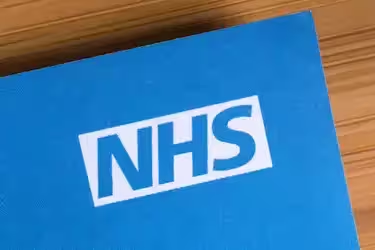Why is it so difficult to find an NHS dentist?
Recent research by the BBC and the British Dental Association has found that adults and children alike are finding it increasingly difficult to find an NHS dentist, and this article looks at that research and other information to better understand the current situation.
Research by the BBC and the BDA (British Dental Association) found that 90% of dental practices across the UK were not accepting new adult patients; 80% were not taking on children. The study also revealed waiting lists of more than 1,000 people, while some dental practices said it would take at least five years to be taken on as a patient.
A separate YouGov survey highlighted the desperate measures people are taking because of a lack of access to NHS dental care. Of those questioned, 10% had tried to carry out their own dental work. From this group, one-third (33%) said they had attempted to extract their own teeth within the last two years, and 32% had tried to give themselves fillings.
Only certain groups are entitled to free NHS dental treatment; this includes anyone who:
- Is under 18 years of age or under 19 and still in full-time education.
- Is pregnant or has given birth in the last 12 months.
- Receives certain benefits (including income support, Pension Credit Guarantee, and Universal Credit).
- Has an NHS tax credit certificate.
- Has a valid HC2 certificate (you may also get some help if you have an HC3 certificate).
- Has a maternity exemption certificate.
If you don’t fall into one of these categories, you’ll need to pay for dental treatment, but the NHS caps prices.
Remember that NHS dental treatment only covers work considered ‘clinically necessary’. In other words, it must be treatment your dentist thinks you need for good oral health.
Why isn’t dental care free for everyone?
When the NHS launched in 1948, dental care was free alongside medical treatment. By 1951, charges were introduced for dentures as demand was so great and the NHS could not cover costs. Since then, charges for dental exams and other treatments have followed and have gradually risen.
Currently, dental treatment is split into bands, with each band costing a fixed amount:
- Band one covers dental exams, diagnosis and guidance. It also includes x-rays, a scale and polish if your dentist thinks it’s necessary. The current charge is £25.80.
- Band two includes fillings and root canal treatment alongside treatments such as extractions. The current charge is £70.70.
- Band three is the highest group and covers more extensive dental work such as dentures, crowns and bridges. The current charge is £306.80.
Finally, there is a standalone cap on urgent dental treatment, which covers examinations, x-rays, repairing and refixing inlays and crowns and other treatments.
There are several reasons why so few dentists are taking on NHS patients. Fundamentally, it comes down to the cost of providing those services, government underfunding, and lack of qualified dentists.
Cost of providing NHS services
NHS dental care is a service provided by (mainly) private dental practices. It means that the NHS pays these practices to carry out treatment, and dentists are not employed by the NHS (unlike doctors and nurses).
The money dentists receive from the NHS is not enough to cover the service they provide. Because of this, many dentists have chosen not to provide NHS dental care.
Under the terms of the NHS contract, dentists are not paid for the number of procedures they perform. Instead, they need to earn what’s called ‘units of dental activity’ or UDA for short.
Each practice that carries out NHS work is given a UDA target. They must meet this precisely to get paid. If they don’t meet the target, they don’t get paid. If they exceed the target, they must pay back what they have earned.
The problem is that UDAs correspond to treatment bands, not the treatment or procedure. So, for example, work that falls into band one will earn a dentist one UDA regardless of how much time they spend with the patient. Similarly, it doesn’t matter if a patient needs three or eight fillings; the dentist will earn the same number of UDAs.
For many dentists, the money they receive for the treatment they provide isn’t enough. It also doesn’t necessarily reward preventative treatment or reflect the skills and experience of dentists who continue to train and develop their expertise.
Also, remember that the money you pay for NHS dental services goes to the NHS, not the dental practice. Practices are only paid if they meet their UDA target.
Government underfunding
Funding for dental care has been falling since 2006. It’s estimated that in the five years from 2014 to 2019, funding for NHS dentistry fell by 4%. In contrast, funding for overall NHS services rose by around 7% during the same period.
These current funding levels only provide enough money to cover dental services for half the population. The UK spends the least money on dental care services and dental care workers in the G7 (a political forum comprising seven leading industrial countries).
The increasing cost of providing dental services is making the underfunding issue worse. Data from the British Dental Association (BDA) show that the cost of utilities to run a practice has risen by an average of 35%, while lab costs have risen by 15%.
Dentists continue to opt out of NHS services.
As of May 2022, 3,000 dentists had stopped providing NHS services. Nearly half (45%) had reduced their NHS services since the pandemic, while 75% said they would reduce their NHS commitment in the next 12 months.
To put that into perspective, of the four European countries in the G7 (UK, Germany, Italy, and France), the UK has the fewest dentists per 10,000 of the population at just 5.3. Germany has the most (8.5), followed by Italy (8.3) and France (6.5).
Within the UK, England has the fewest NHS dentists per 10,000 of the population at just 4.4. Scotland has the most (6.2), then Northern Ireland (6.0), followed by Wales (4.8).
Within England (the worst affected home nation), West Norfolk had the fewest dentists – only 3.4 per 10,000 of the population.
Some areas were much more fortunate and had a far higher number of practising dentists. Bradford City, for example, had 12.6 dentists per 10,000 of the population – nearly four times as many compared to West Norfolk.
You can search for local NHS dentists on the NHS website. Practices will tell you whether or not they’re taking on any new NHS patients. If they are, you may be put on a waiting list. Bear in mind that waiting lists can be extended.
If there are no NHS dentists near you, you can contact dental practices outside your local area – unlike GPs, you’re not limited by location.
There are also dental charities, for example, Dentaid, that run mobile clinics. They specifically visit areas with limited dental care but where people need urgent dental treatment. Clinics focus mainly on pain relief, such as fillings and extraction, rather than routine treatment.
You won’t need an appointment to visit a Dentaid clinic, but as the service is entirely free, queues can be long. Some of the most recent clinics have taken place in Suffolk, where the charity has helped up to 45 patients a day in towns dotted across the county. You can learn more about Dentaid’s public access clinics on their website.
Alternatively, you may decide to join a practice as a private patient and pay for treatment yourself.
Each individual dental practice sets dental exams and treatment costs, so it’s always a good idea to compare fees in your local area. Most practices have a list of prices on their websites.
If you’re concerned about cost, most dental practices offer payment plans where you can spread the cost of basic exams and hygiene appointments across the year. You’ll need to pay for any additional treatment, but again, there are often plans that mean you can pay off what you owe in instalments.
You could also consider a dental insurance plan which helps cover the cost of check-ups and some treatment in exchange for a monthly premium. You can opt between different levels of cover depending on what you need and your budget. To find out more, just contact us, and we’ll put you in touch with a regulated broker who can take you through all your options.
Disclaimer: This information is general and what is best for you will depend on your personal circumstances. Please speak with a financial adviser or do your own research before making a decision.







